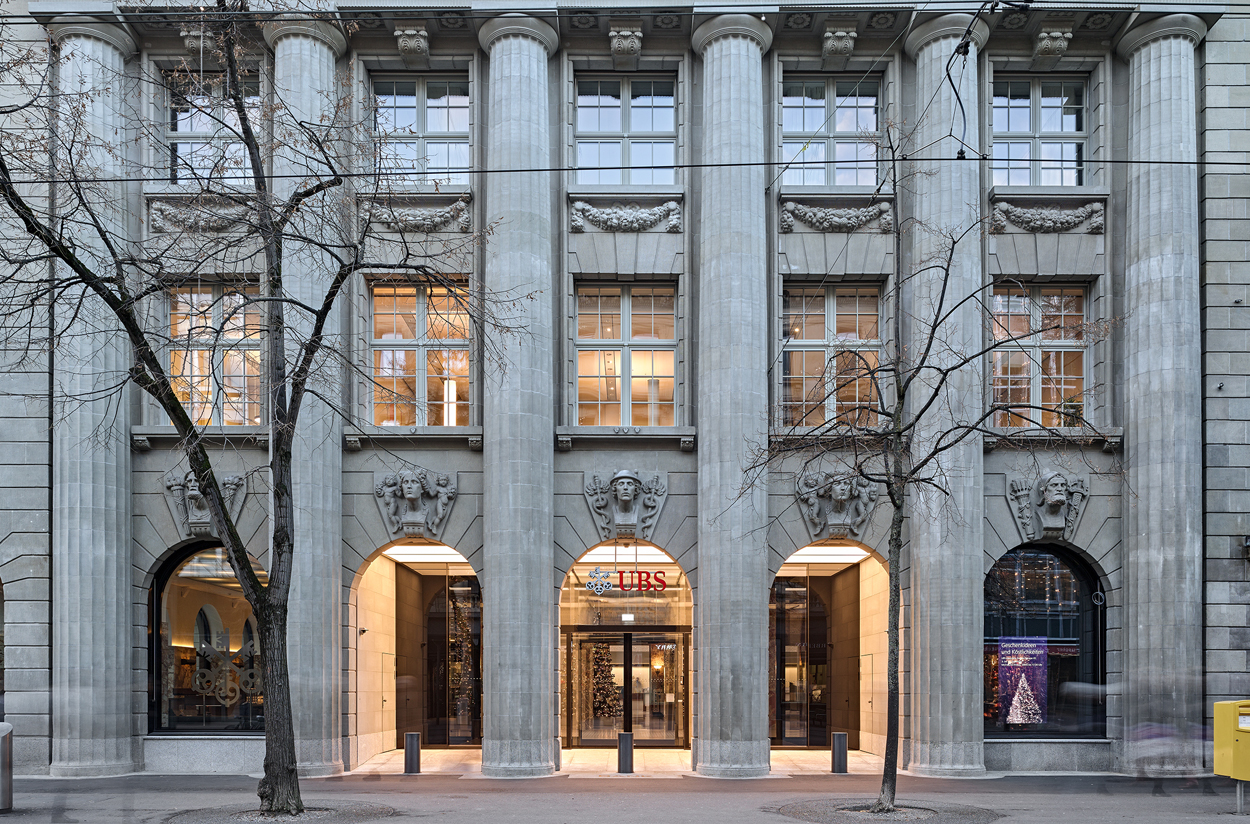Financial Results
UBS's Scale Isn't A Risk To Swiss Economy – Chairman, CEO

Looking back two years to when UBS bought Credit Suisse in a dramatic time for Switzerland's financial sector, the two top figures at UBS countered what they said are "ill-informed" ideas about UBS's current size and the risks this poses to the Swiss economy.
In comments that carry echoes of “too-big-to-fail” debates
amid bank bailouts in 2008/09, UBS’s chairman and CEO have pushed
back against the notion that the lender’s size –
enlarged via absorbing Credit Suisse in 2023 – poses risks to
the Swiss economy.
Colm Kelleher, chairman, and Sergio Ermotti (both pictured
below), CEO, addressed the issue of the Zurich-listed bank’s
market position, which has been boosted by the Credit Suisse
"shotgun wedding," in their annual shareholder letter that
accompanies UBS’s annual report, issued yesterday. (To see the
fourth-quarter 2024 financial results,
click here.)

Sergio Ermotti

Colm Kelleher
The report’s publication marks the first full operational year
at UBS since it
acquired Credit Suisse at the behest of the Swiss federal
government in March 2023 following a series of crises at Credit
Suisse. The Alpine state now has only one universal bank,
although there is still a considerable number of other banks and
financial institutions.
More than a decade earlier, when markets crashed amidst the
sub-prime mortgage sector blow-up in the US, rippling across
international markets, even UBS had to be supported by the Swiss
government, although it repaid a special loan within five
years. In the subsequent weeks and months, there was much
debate on the risks of creating banks with balance sheets so
large that countries in which they are headquartered struggle to
bail them out. In ensuing years, regulators and central banks
have tightened capital requirements and other standards on
banks.
Ermotti and Keller said in their letter that they
support most Swiss government proposals to make the
financial system more resilient, such as the introduction of a
“public liquidity backstop.” However, the duo warned against
the risk of “excessive” capital requirements, citing the need for
UBS and Swiss banking more generally to remain competitive.
(Ermotti has reportedly made such points for some
time; see
here, for example. Read another story
here about higher Swiss capital requirements.)
Without identifying specific individuals,Ermotti and Keller spoke
of “the often-ill-informed public debate in Switzerland about
potential risks emerging from our business activities or our size
in relation to the Swiss economy, coupled with intensified
demands for future capital requirements, has created
uncertainties as we enter 2025.”
“Yet the current discussion often overlooks important differences
between today’s UBS and the former Credit Suisse, namely that our
low-risk business model and high asset quality make UBS a far
safer and more secure financial firm than Credit Suisse ever
was,” they said.
“It is important to remember that UBS has consistently
implemented the too-big-to-fail framework since its introduction
and has taken significant measures to ensure the resolvability of
the firm,” they said. “Our balance sheet today amounts to less
than half the size of the combined UBS and Credit Suisse before
the Global Financial Crisis of 2008, with total loss-absorbing
capacity of $185 billion at the end of 2024, or almost four times
the write-downs UBS incurred in the years following the
crisis.
“Indeed, it was the safe, sustainable and successful business
model we have pursued since then, based on a strong capital
position and disciplined risk management, that enabled us to
respond to the Swiss authorities’ request and restore financial
stability in a matter of days following the rescue weekend," they
wrote.
In other details, Ermotti and Keller said that its “tested group
strategy, with around 60 per cent of our revenues derived from
asset-gathering activities, and our diversified balance sheet
make UBS unique among the world’s systemically important banks.”
UBS returned almost $4 billion to shareholders last year via
buybacks and dividends, while delivering a Common Equity Tier 1
ratio – a standard international measure of a bank’s capital
shock absorber – of 14.3 per cent. UBS met its integration
targets; it made a full-year profit of $5.1 billion, down from
$7.63 billion in 2023, and underlying return on CET1 capital of
8.7 per cent of its plans but below profitability levels before
it bought Credit Suisse.
At the 2025 annual general meeting, the UBS board of directors proposes a dividend payout to shareholders of $0.90 per share for the 2024 financial year, the annual report said.